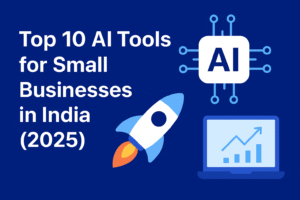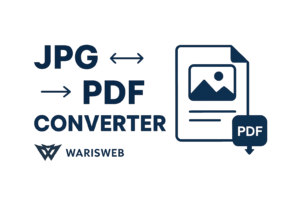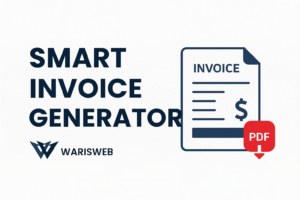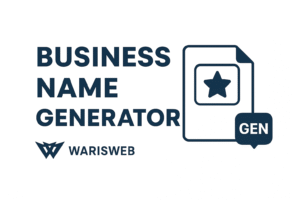Best Online Coding Courses for Beginners [Free & Paid] – 2025
![Best Online Coding Courses for Beginners [Free & Paid] – 2025](https://warisweb.com/wp-content/uploads/2025/08/ChatGPT-Image-Aug-28-2025-07_58_12-PM.png)
Learning to code in 2025 isn’t just a nice-to-have skill anymore – it’s practically essential. Whether you’re looking to switch careers, boost your current job prospects, or simply understand the digital world better, coding has become the new literacy of our time.
The numbers don’t lie: programming jobs are expected to grow 22% faster than the average for all occupations. Plus, even if you’re not planning to become a full-time developer, coding skills can make you more valuable in almost any field. Marketing professionals use it for automation, designers create interactive websites, and entrepreneurs build their own digital products.
But here’s the thing – with so many coding courses out there, how do you pick the right one? Don’t worry, I’ve got you covered.
What Makes a Good Beginner Coding Course?
Before we dive into specific platforms, let’s talk about what you should actually look for in a coding course. Not all courses are created equal, and what works for your friend might not work for you.
Beginner-friendly approach: The best courses assume you know absolutely nothing about coding. They explain concepts in plain English and don’t throw jargon at you from day one. Look for courses that start with “Hello World” and gradually build up complexity.
Structured learning path: Random tutorials on YouTube might teach you bits and pieces, but a good course follows a logical progression. You want to learn variables before functions, and functions before object-oriented programming.
Community support: Coding can be frustrating, especially when you’re staring at error messages that might as well be written in ancient Greek. Having access to forums, Discord servers, or study groups can make the difference between giving up and pushing through.
Hands-on practice: Reading about code is like reading about swimming – you won’t really get it until you dive in. The best courses have you writing code from lesson one, not just watching someone else do it.
Free Best Online Coding Courses for Beginners
Let’s start with the good news – you can learn to code without spending a dime. These free platforms have helped thousands of people land their first programming jobs.
freeCodeCamp
If there’s one name that comes up in every “how I learned to code” story, it’s freeCodeCamp. This nonprofit has been helping people learn programming since 2014, and they’ve only gotten better.
What makes it special: freeCodeCamp doesn’t just teach you to code – they teach you to build real projects. By the end of their curriculum, you’ll have built websites, data visualizations, and even mobile apps. Their certificates are respected in the industry, and many employers specifically recognize freeCodeCamp graduates.
The curriculum covers:
- Responsive Web Design (HTML, CSS)
- JavaScript Algorithms and Data Structures
- Front End Development Libraries (React, Redux)
- Data Visualization
- Back End Development and APIs
- Quality Assurance
- Scientific Computing with Python
- Data Analysis with Python
- Machine Learning with Python
Pros: Completely free, project-based learning, strong community, recognized certificates Cons: Can feel overwhelming for absolute beginners, less hand-holding than paid courses
Codecademy Free Plan
Codecademy pioneered interactive coding education, and their free plan still packs a punch. While it’s more limited than their paid options, it’s perfect for getting your feet wet.
What you get for free:
- Introduction courses in Python, JavaScript, HTML, CSS, and SQL
- Basic projects and quizzes
- Access to community forums
Pros: Interactive coding environment, immediate feedback, great for testing if you like programming Cons: Limited course selection, no certificates, can’t access more advanced topics
Khan Academy
You probably remember Khan Academy from math class, but they’ve expanded into programming education too. Their approach is particularly good for visual learners.
What they offer:
- Intro to Programming with JavaScript
- HTML/CSS basics
- SQL database courses
- Computer science principles
Pros: Excellent for visual learners, step-by-step explanations, completely free Cons: Limited programming languages, not as comprehensive as other platforms
Best Paid Coding Courses for Beginners
While free courses are amazing, paid courses often provide more structure, support, and depth. Think of them as an investment in your future – and compared to a traditional college degree, they’re incredibly affordable.
Udemy
Udemy is like the Amazon of online courses – they have everything, and the prices are usually pretty reasonable (especially during their frequent sales).
Top beginner courses to check out:
The Web Developer Bootcamp by Colt Steele: This course is legendary in the coding community. Colt has a gift for explaining complex concepts in simple terms, and the course covers everything from HTML basics to building full-stack applications.
100 Days of Code – Python by Angela Yu: If you’re interested in Python (and you should be – it’s incredibly versatile), this course gamifies learning with daily challenges. Angela’s teaching style is engaging, and the projects are genuinely fun.
Pros: Affordable during sales, lifetime access, downloadable content, wide variety of instructors and styles Cons: Quality can vary between instructors, no official accreditation, can be overwhelming with too many choices
Coursera
Coursera partners with top universities and companies to offer courses that carry more academic weight. If you’re someone who values credentials, this might be your best bet.
Standout programs for beginners:
Google Career Certificates: These are relatively new but gaining serious traction with employers. The Google IT Support Certificate can be completed in 3-6 months and is designed to prepare you for entry-level roles.
University of Michigan’s Python for Everybody: This specialization is taught by Dr. Chuck Severance, who has a knack for making programming accessible. It’s part of a complete computer science foundation.
Pros: University-quality education, financial aid available, certificates carry academic weight, structured timelines Cons: More expensive than other platforms, stricter deadlines, can feel more academic than practical
edX
EdX is similar to Coursera but often focuses more on computer science fundamentals. They offer both free audit tracks and paid certificate tracks.
Notable programs:
Harvard’s CS50: This is probably the most famous computer science course in the world, and you can take it for free (pay only if you want the certificate). It’s challenging but incredibly rewarding.
MIT’s Introduction to Computer Science and Programming: If you want to understand the theory behind programming, this course dives deep into problem-solving and computational thinking.
Pros: High-quality content from top universities, strong computer science foundation, free audit options Cons: Can be more theoretical than practical, steeper learning curve
Free vs Paid Courses: The Real Comparison
| Feature | Free Courses | Paid Courses |
|---|---|---|
| Cost | $0 | $10-$200+ |
| Content Quality | Often excellent, but varies | Generally more polished and comprehensive |
| Support | Community forums mainly | Often includes instructor feedback, live sessions |
| Certificates | Limited recognition | Industry-recognized certificates |
| Structure | Self-paced, sometimes less organized | More structured learning paths |
| Updates | May be less frequent | Regular updates to keep content current |
| Time Commitment | Flexible, easy to procrastinate | Deadlines help maintain momentum |
How to Choose the Right Coding Course for You
The “best” course really depends on what you want to achieve. Let me break this down by common goals:
Want to build websites? Start with HTML, CSS, and JavaScript. FreeCodeCamp’s Responsive Web Design course or Udemy’s Web Developer Bootcamp are perfect starting points.
Interested in data science or AI? Python is your friend. Try freeCodeCamp’s Scientific Computing with Python or Coursera’s Python for Everybody specialization.
Thinking about mobile apps? You’ll eventually want to learn Swift (iOS) or Kotlin (Android), but starting with JavaScript and React Native gives you more flexibility.
Want to work for big tech companies? Focus on computer science fundamentals. Harvard’s CS50 or MIT’s courses on edX will give you a solid foundation.
Just curious and want to explore? Start with free courses to see what interests you before committing money to a specific path.
Tips for Success (From Someone Who’s Been There)
Learning to code isn’t just about finding the right course – it’s about developing the right habits and mindset.
Start small and be consistent: Thirty minutes every day beats a six-hour weekend binge session. Your brain needs time to process new concepts, and consistent practice builds muscle memory.
Don’t just watch – code along: It’s tempting to just watch videos passively, but you won’t really learn until you start typing. Even if you’re just copying the instructor at first, the act of typing helps cement the concepts.
Join communities: Whether it’s the freeCodeCamp forum, Reddit’s r/learnprogramming, or local meetup groups, connecting with other learners keeps you motivated and gives you people to ask for help.
Build projects outside your coursework: Once you learn the basics, start building things that interest you. A simple portfolio website, a calculator app, or even a basic game will teach you more than any tutorial.
Don’t get stuck in tutorial hell: This is a real phenomenon where people keep taking course after course without ever building anything original. After you finish your first course, start building your own projects.
The Bottom Line
Here’s my honest recommendation: start with free courses to see if you enjoy programming, then invest in paid courses for more structured learning and better job prospects.
If you’re completely new to coding, begin with freeCodeCamp’s Responsive Web Design course. It’s free, well-structured, and will give you a real sense of what programming is like. If you find yourself enjoying it, consider investing in a paid course like Udemy’s Web Developer Bootcamp or one of Coursera’s specializations.
Remember, the best course is the one you’ll actually complete. Don’t get paralyzed by choice – pick something that looks interesting and start coding today. You can always learn other languages and frameworks later, but you can’t learn anything if you never start.
The demand for programming skills isn’t going away. If anything, it’s only going to grow as AI and automation become more prevalent. The programmers won’t be replaced by AI – they’ll be the ones using AI to build even more amazing things.
Frequently Asked Questions?(FAQ's)
freeCodeCamp and Udemy’s Web Development Bootcamp are among the best options for beginners in 2025. FreeCodeCamp offers comprehensive, project-based learning for free, while Udemy provides more structured, instructor-led courses at affordable prices.
Yes, platforms like freeCodeCamp, Khan Academy, and Codecademy Free Plan offer excellent free coding courses. FreeCodeCamp is particularly comprehensive, offering full certifications in various programming areas without any cost.
Paid courses often provide structured learning, certification, mentorship, and more comprehensive content, making them a good investment for serious learners. However, you can definitely start with free courses to test your interest before investing money.
For beginners, it usually takes 3 to 6 months to learn basic coding skills with consistent practice. However, becoming job-ready typically takes 6-12 months of dedicated study and building projects, depending on your goals and the time you can dedicate to learning.







